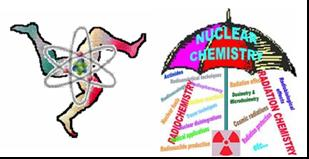Speaker
Dr
Stanislav Pavelka
(1Department of Radiometry, Institute of Physiology, Academy of Sciences of the Czech Republic, Prague and 2Central-European Technology Institute, Masaryk University, Brno, Czech Republic)
Description
Thyroid hormones (TH) play important roles in the development and function of both, brown and white adipose tissue. However, data about the local conversion of TH in adipocytes are still scarce. With the aid of our newly developed radiometric enzyme assay, we measured changes in the activity of the type 3 iodothyronine deiodinase (D3) in several depots of murine white adipose tissue (WAT) during the development of dietary obesity in the experimental animals. D3 is the key enzyme in the metabolism of TH, catalyzing the conversion of biologically most active 3,5,3'-triiodo-L-thyronine (T3) and also of prohormone thyroxine (T4) into inactive metabolites, 3,3'-diiodothyronine (T2) and 3,3‘,5‘-triiodothyronine (reverse T3), respectively.
Changes in the metabolism of TH during the development of dietary obesity were followed in male C57BL/6J mice. At four weeks of age, the animals were randomly assigned to a standard low-fat (LF) diet or a special high-fat (HF) diet and maintained on these diets for two weeks before analysis. In addition to radiometric determination of D3 activities at the molecular level, changes in the thyroid status of the animals at the whole-body level were monitored. Serum total T3 and T4 levels were determined using commercial RIA kits. Moreover, several morphological parameters were followed, among others the assessment of cellularity of WAT depots by fluorimetric determination of tissue DNA concentration.
Compared to LF diet, HF-feeding resulted in a significantly higher fat depots weight: epididymal fat depots (366 ± 19 vs. 242 ± 13 mg in LF controls), dorsolumbar subcutaneous fat (200 ± 7 vs. 143 ± 4 mg). Cellularity of the subcutaneous fat of HF group, assessed as DNA content, was higher (304 ± 52 vs. 215 ± 13 micro g DNA/depot) while no difference was found in epididymal fat. Plasma levels of total TH were significantly elevated in mice fed the HF diet: T3 (1.30 ± 0.03 vs. 0.96 ± 0.03 nmol/L), T4 (41.6 ± 1.1 vs. 36.9 ± 0.8 nmol/L). D3 activity was significantly enhanced in the subcutaneous fat of the HF-mice (142 ± 20 vs. 85 ± 12 fmol T2/h/mg protein in LF controls) but not so much in epididymal fat.
In conclusion, we found that the development of HF diet-induced obesity in mice was associated with an enhancement of D3 activity in WAT. This work was supported by the Academy of Sciences of the Czech Rep. (Research project No. AV0Z50110509), by the Ministry of Education of the Czech Rep. (Research project No. MSM0021622413), and by the Czech Science Foundation (Grant No. 304/08/0256).
Author
Dr
Stanislav Pavelka
(1Department of Radiometry, Institute of Physiology, Academy of Sciences of the Czech Republic, Prague and 2Central-European Technology Institute, Masaryk University, Brno, Czech Republic)
Co-author
Zuzana Macek Jilkova
(Department of Adipose Tissue Biology, Institute of Physiology, ASCR, Prague)
